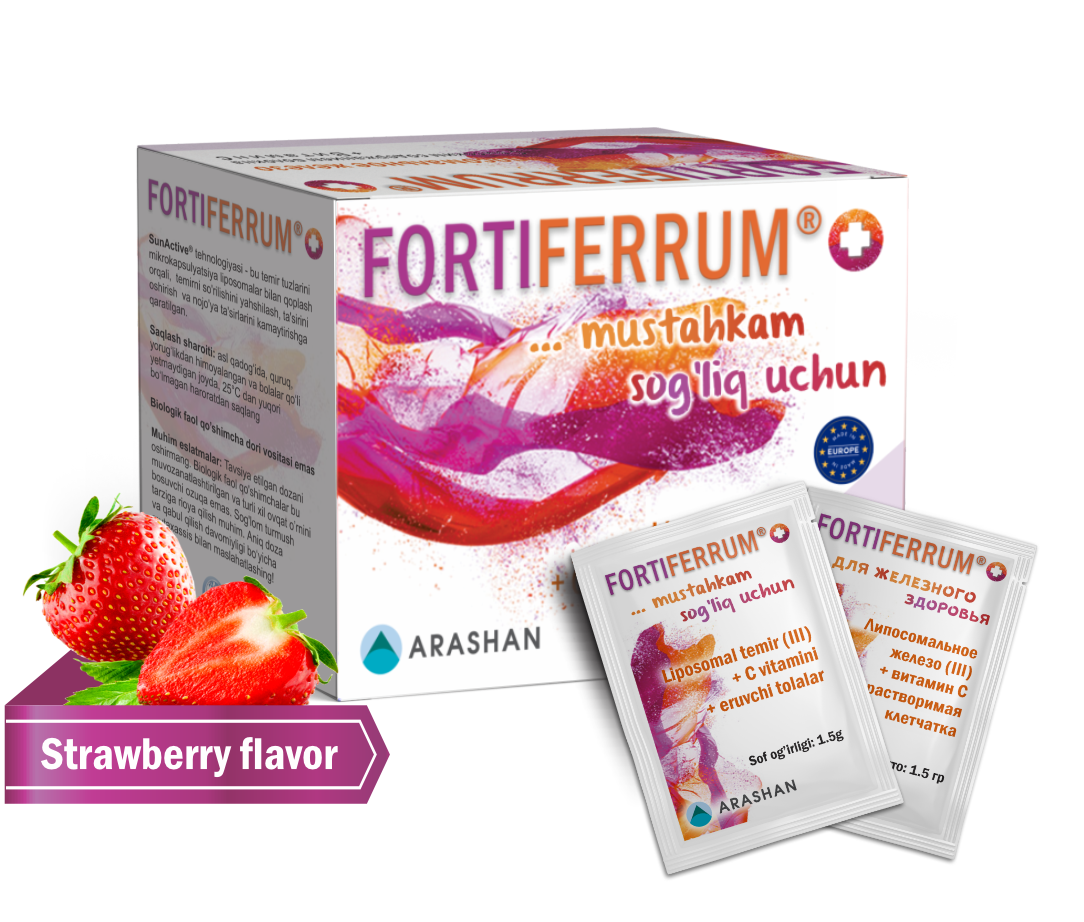IRON DEFICIENCY
With long-term iron deficiency, the body can develop a condition known as "iron deficiency anemia", which is a condition characterized by a decrease in the amount of hemoglobin and the number of red blood cells, which causes symptoms that impair a person's quality of life.

An early symptom caused by iron deficiency is fatigue. Women and adolescents who do not eat enough meat and fish or follow a vegetarian diet often have low iron stores.
Regardless of its cause, iron deficiency increases maternal and child morbidity during pregnancy, resulting in an increased risk of perinatal death, preterm birth, or low birth weight.
MAIN CAUSES OF IRON DEFICIENCY
There are many factors that influence the development of iron deficiency disorders and, as a result, the occurrence of anemia. The main reasons are listed below:
- NUTRITIONAL CAUSES:Low iron intake through food usually does not cause an iron deficiency in adults, but during lactation the physiological needs of this mineral are not covered by dairy products and for this reason it is essential an additional intake of this mineral during the 4 to 6 months of age. During childhood, adolescence and pregnancy our physiological needs of iron has an increase.
Despite being a huge influencer the food shortages of iron are not the main cause to development an anemia. Iron malabsorption does not represent a frequent cause of deficiency, except in persons who have been operated on gastrectomy or suffering from malabsorption syndrome. About 50% of these patients will suffer from iron deficiency anemia in the following years.
Diets based on plant products, especially in the case of vegans, may cause iron deficiency due to the absence or low iron absorption in the intestine, since this mineral is presented in its form of non-heme iron. - ABSORPTION PROBLEMS:Some disorders such as atrophic gastritis weaken the stomach acidity causing a reduction of the absorption of non-heme iron, but do not affect the absorption of iron salts or heme iron from animal sources.
Other conditions such as celiac disease also hinder iron absorption process and can cause the onset of anemia. - BLOOD LOSS AND HEMORRHAGE:is the most common cause of iron deficiency in adults, which may be due to various reasons. The most common considering the female population between 15 and 45 years old are blood loss associated with menstruation.
In the case of adult men and postmenopausal women suffer from iron deficiency anemia, the main cause is usually chronic blood loss from the gastrointestinal tract, which may be due to gastroesophageal reflux, hiatal hernia, esophagitis, excessive intake of NSAIDs, ulcers, parasites or neoplastic diseases.
IRON DEFICIENCY TREATMENT
The main choice in treatment for iron deficiency state is the administration of drugs or food supplements based on iron. However, one major problem related to this therapeutic group in clinical practice is the appearance of side effects associated with iron administration, which can lead to difficulties in therapeutic management and also conditioning patient compliance in long-term treatments.
Despite many doctors having experimented with various treatment regimens to overcome the side effect problem, it still represents a barrier to long-term iron deficiency treatments. Moreover, the physiological inability of the body to absorb all ingested iron that is absorbed only in a small fraction (10% to 20%) even in patients with severe iron deficiency, often undesirable consequences that aggravate the clinical condition.
In this context, in which abandonment of therapy is very common, there is a need for new formulations that improve the absorption and tolerability of iron intake to ensure better compliance to treatment allowing an adequate solution for iron deficiency states.
In this context, in which abandonment of therapy is very common, there is a need for new formulations that improve the absorption and tolerability of iron intake to ensure better compliance to treatment allowing an adequate solution for iron deficiency states.
Chimkent Street 8/2, Tashkent, Uzbekistan
Phones:
(+998) 93 111 10 05, 71 208 50 10, 71 208 89 00
E-mail: info@arashan.uz



